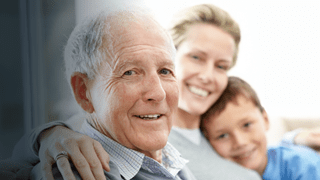Safeguarding Adults: What You Need to Know
Safeguarding adults is a complicated topic and one that needs careful consideration. Anyone in an organisation that works closely with adults must have an awareness of safeguarding adults and what this entails, even if the adults they work with aren’t classed as ‘vulnerable’.
If you don’t know the elements which make up safeguarding adults – who could be at risk, what to look out for, what our roles and responsibilities are when it comes to vulnerable adults, and so on – it can have a huge impact on any adults at risk, as well as on yourself. So, to ensure someone’s safety (as well as your own), you need to make sure you know your stuff.
In this article, we go into some of the important topics relating to safeguarding adults and highlight important pieces of legislation for safeguarding adults.
What is Safeguarding Adults?
Safeguarding adults is defined in the Care Act 2014 as “protecting an adult’s right to live in safety and free from abuse and neglect”. It hinges on people and organisations working successfully together to prevent vulnerable adults from risks and the experience of abuse and neglect, as well as ensuring that the adult’s wellbeing is at the forefront by showing regard to their feelings, wishes, views and beliefs.
The Care Act defines the following as an ‘adult at risk’:
- Someone 18 or over
- Someone that has care and support needs
- Someone that is experiencing, or at risk of, abuse or neglect
- Someone that cannot protect themselves against abuse or neglect as a result of their needs
Any adult that is ‘at risk’ and vulnerable to harm should be safeguarded by those with a safeguarding responsibility. Groups that typically fall into this category are elderly or disabled adults, but any adult may require safeguarding if they end up in a situation where they are at risk of harm.
The Care Act also defines what is classed as abuse when we are talking about adults being at risk of harm. Under this definition, abuse involves:
- A single act or a repeated act.
- An opportunistic act or a form of serial abuse, where the perpetrator seeks out and ‘grooms’ individuals.
- An act of neglect or a failure to act.
- Involving more than one type of abuse.
- Deliberate or the result of negligence or ignorance.
- A crime.
There are numerous different types: physical, financial, neglect, organisational, domestic, psychological, sexual, discriminatory, modern slavery, and self-neglect.
What Is the Aim of Safeguarding Adults?
According to the Care Act 2014, the main aims of safeguarding adults are:
- To prevent harm to adults with care and support needs and reduce their risk of being abused.
- To safeguard adults whilst also supporting them to make independent choices and have control over how they live their lives.
- To promote an approach to safeguarding that focuses on outcomes that work for people to provide the best experience possible.
- To raise awareness about preventing, identifying and responding to cases of adult abuse and neglect so that other professionals and communities play their part in safeguarding.
In order to achieve these aims, the following things are necessary:
- The safeguarding roles and responsibilities of individuals and organisations must be made clear.
- A multi-agency framework for safeguarding must be created.
- Access to mainstream community safety measures must be given.
- The interface between safeguarding and quality of service provision must be clarified.
What Legislation Relates to Safeguarding Adults?
The Care Act 2014 was the first piece of legislation that laid out procedures for safeguarding adults on a statutory footing. It provides useful definitions, discusses the importance of multi-agency working and highlights the importance of working together to safeguard adults, emphasising that everyone has a responsibility to protect adults at risk of abuse.
However, it is not the only piece of relevant legislation; other key pieces of legislation for safeguarding adults include the Mental Health Act (2007) and The Mental Capacity Act (2005) and Deprivation of Liberty Safeguards (DoLS), to name a few.
What Does Safeguarding Adults Involve?
Safeguarding adults involves understanding the warning signs of abuse and being able to gauge whether someone is vulnerable and unable to protect themselves from abuse or neglect. If a vulnerability or the signs of abuse are identified, you are responsible for taking action to protect the adult that needs safeguarding.
General indicators of abuse in adults include:
- A change in the person’s behaviour or personality.
- An unwillingness to talk about certain people or situations.
- Bruises or marks that appear to have been made with an implement or that are located in places where such injuries do not usually appear.
- Unexplained symptoms, or explanations for injuries and symptoms that don’t make sense.
There is a range of different types of abuse, each of which has its own symptoms and warning signs. You can read a full guide to the ten types of abuse in our guide here.
If you are concerned that someone might be experiencing abuse, the steps that you take will depend on your role and the organisation that you work for. In the majority of cases, you will be directed to a designated safeguarding lead or officer to report the concern, who will then take the necessary steps to start an investigation. But in some cases, it will be your responsibility to contact relevant agencies and lead an investigation into your concerns to ensure that the adult is safe.
It’s important to always report any concerns about the safety of a vulnerable adult, even if you don’t have any evidence to support your claim. It’s your professional responsibility to protect the adults you interact with in your role, and failing to act on any warning signs of adult abuse could mean that it gets worse and more harm is done before an intervention takes place.
There can be a lot of fear involved with reporting abuse, especially if you’re not 100% sure that your concerns are valid. However, speaking up about potential abuse can save lives, and if a concern ends up being false then there won’t be any professional consequences. It’s advised that you always speak to someone else (if appropriate) about any warning signs or worrying behaviour and then decide whether you want to formally raise a complaint.
Who Is Responsible for Safeguarding Adults?
Safeguarding is considered to be everyone’s responsibility, but certain people have more of a responsibility because of their jobs. Anyone that works with adults and vulnerable adults in particular, such as medical staff, care workers, support staff for disabled adults and those that work with victims of domestic abuse, are much more likely to interact with vulnerable adults and therefore are legally responsible for protecting them.
FAQs
Where can you obtain local safeguarding adults support and guidance from?
If you have a concern about an adult’s safety and are looking for guidance and support for the matter, you should contact the local authorities and ask for the adult safeguarding coordinator. In an emergency, you can also call the police and speak to them about the situation if you feel that immediate intervention might be needed.
Where can legislation for safeguarding adults be found?
The most important pieces of legislation relating to safeguarding adults are The Care Act 2014, the Sexual Offences Act 2003, the Safeguarding Vulnerable Groups Act 2006 and the Public Interest Disclosure Act 1998. All of these pieces of legislation can be found online where they can be read in full.
What are the principles of safeguarding adults?
The six main principles of safeguarding adults are empowerment, prevention, proportionality, protection, partnership and accountability. These principles should be kept in mind whenever any safeguarding action is taken or procedures are followed, which helps to ensure that the vulnerable person or people involved are given appropriate protection and autonomy.
Summary
Safeguarding vulnerable adults is particularly relevant to professionals that work in healthcare and social care, but any adult can be at risk of abuse and therefore any adult may need safeguarding support. The most important things you can do in the safeguarding of vulnerable adults are to be aware of the signs of abuse and know the correct safeguarding procedures to follow to get help, as these will ensure that abuse is spotted as early as possible and harm is reduced or prevented.
If you’d like to learn more about what is involved in safeguarding adults, we cover this topic in more detail in our ‘Safeguarding Adults Level 2’ and ‘Safeguarding Adults Level 3’ online training courses or our ‘Statutory & Mandatory Training: Safeguarding Adults’ course.









/safer-recruitment.jpg?mw=320&hash=A2BB5E144C89C295EC10C63680F69F39C4C3E566)




/e-safety-.jpg?mw=320&hash=A9FCF6B70F32AD3EA74633373FF0213B000F75FF)










































